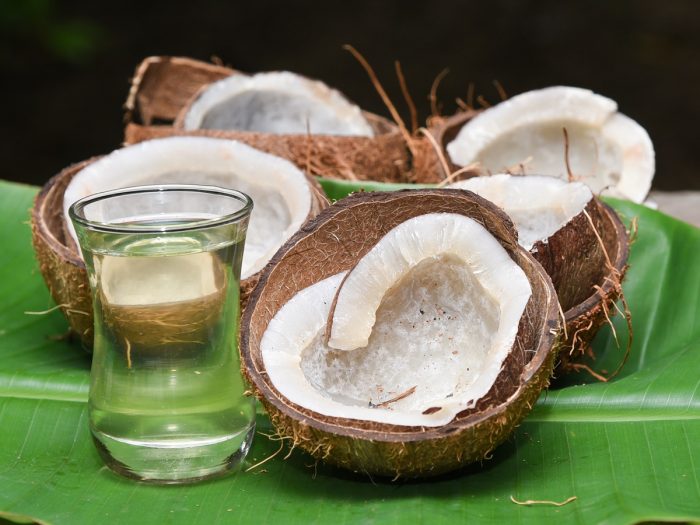The health benefits of virgin coconut oil are well known around the world, making it one of the most highly sought after substances for natural health practitioners. It is able to soothe inflammation, improve digestion, boost hair and skin health, aid in weight loss, protect heart health, increase energy levels and stimulate the metabolism, among other notable benefits. The versatility and efficacy of coconut oil has also led many people to make their own virgin coconut oil at home, both to save money and ensure that they always have the oil available when they need it.
For those who want to truly take their coconut oil use into their own hands, the following steps are precisely what you need. [1]
Preparing Virgin Coconut Oil At Home
Total Preparation Time: 2-3 days
Ingredients:
- 3 medium coconuts
- Screwdriver
- Hammer
- Blender
- Cheesecloth
- 3 bowls
- Sieve
- Ladle
- 3 cups of non-chlorinated water
- Mesh Strainer
- Jar

Coconut oil can be used in the kitchen and in the medicine cabinet. Photo Credit: Shutterstock
- Begin the process by removing the coconut water. To do this, drill into each coconut with the screwdriver and allow the water to empty into a bowl. Do not discard the water.
- Take the hammer and strike each coconut solidly until the outer shell cracks, which will expose the white meat inside.
- Slide a knife around the edge of the shell, separating the meat from the brown skin on the edge. This won’t be perfect, however, so once the meat is separated, use the knife to carve away any excess brown skin from the meat. Discard these peelings and the shell that you separated.
- Rinse the remaining coconut milk with water and cut it into manageable pieces to place in the blender. Pour in the coconut water that you removed at the beginning. Blend these two together at a high speed for a few minutes to thoroughly mix and pulverize the meat.
- Pour the coconut mixture out into a large bowl, and then squeeze the mixture to combine the coconut flakes and milk until it forms a thick, creamy blend. Continue pressing the water and flakes together, compressing it into a ball, and then let this mixture stand at room temperature for 2-3 hours.
- Now, place a sieve inside a large bowl with the cheesecloth on top. Ladle the coconut mixture from the first bowl onto the cheesecloth in the second bowl. You then want to squeeze the mixture in the cheesecloth, letting the liquid fall down into the bowl, leaving the coconut flakes in the cheesecloth. The goal is to extract all the liquid from the coconut flakes. Once all the liquid has been gathered in the second bowl, you can dispose of the (mostly) dry coconut flakes.
- Pour the coconut liquid into a large, shallow dish, like a casserole dish, and cover it with cling film or plastic. In relatively cool locations, you can leave this liquid out for approximately 48 hours. Then, place the mixture in the fridge for 3-8 hours, where it will solidify and begin to separate.
- The oil will form a solid mass at the top of the dish, and must be carefully removed from the liquid below it. To do this, you may use the metal strainer, but be careful not to push the oil back into the liquid or allow the two parts to mix together again. Once all of the oil has been caught in the strainer, you may discard the remaining liquid.
- This leaves you with approximately 1 cup of virgin coconut oil, which should be stored in a mason jar and placed in the fridge. Due to the high level of saturated fats, this oil can stay good for up to two years, and has a very low chance of becoming rancid.
With a few days of attention and a minimum of effort, you can have your own supply of pure virgin coconut oil for all of your cooking and cosmetic needs!
